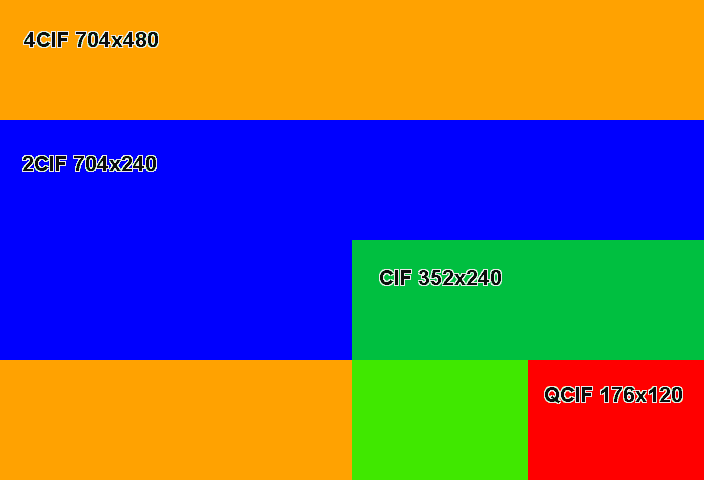Analog TV and Digital Video Resolution Guide
In analog video the image consists of television lines, and in digital the picture is made up of picture elements otherwise known as pixels. In North America and Japan, the NTSC standard (National Television System Committee) is the predominant analog video standard, while in Europe the PAL standard (Phase Alternation by Line) is used. NTSC has a resolution of 480 lines, and uses a refresh rate of 60 interlaced fields per second (or 30 full frames per second).
Contents
TV
When analog video is digitized, the maximum amount of pixels that can be created is based on the number of TV lines available to be digitized. In NTSC the maximum size of the digitized image is 720x480 pixels.
- 720x480 pixels max for NTSC
- 2CIF resolution = 704x240 (NTSC)
- CIF 352x240 (NTSC)
2CIF works by dividing the number of horizontal lines by 2. To compensate for motion blur, each horizontal line is shown twice, a practice known as line doubling.
VGA
Digital VGA resolution is defined by pixels, and the VGA standard is 640x480 pixels.
- VGA 640x480 pixels
- Quarter VGA (QVGA, SIF) 320x240 pixels, compare to CIF
- XVGA 1024x768 pixels
- 4xVGA 280x960 pixels
QVGA is sometimes called SIF (Standard Interchange Format) resolution, which can be easily confused with CIF.
MPEG
The following MPEG resolutions are used:
- MPEG D1 704x480
- MPEG VGA 640x480
- MPEG 2/3 D1 480x480
- MPEG 1/2 D1 352x480
MegaPixel
The maximum resolution of NTSC and PAL, in analog cameras, after the video signal has been digitized in a DVR or a video server, is 400,000 pixels (704x576 = 405,504). 400,000 equals 0.4 Megapixels. Using the CIF format the resolution is down to a mere 0.1 Megapixel. The CIF format is 1/4 the maximum.
- 1280x1024 = 1.3 MegaPixels
- 4CIF = 704x480 pixels (NTSC) = 400,000 pixels = 0.4 MegaPixels
For CCTV, typical images it is generally considered that 20 to 30 pixels are enough to represent one foot of a scene. For applications that require detailed images, such as face identification, the demands can rise to as much as 150 pixels per foot. An example extremely high resolution camera needs to provide a resolution of 1,050x1,050 pixels, which is slightly more than 1 megapixel.
